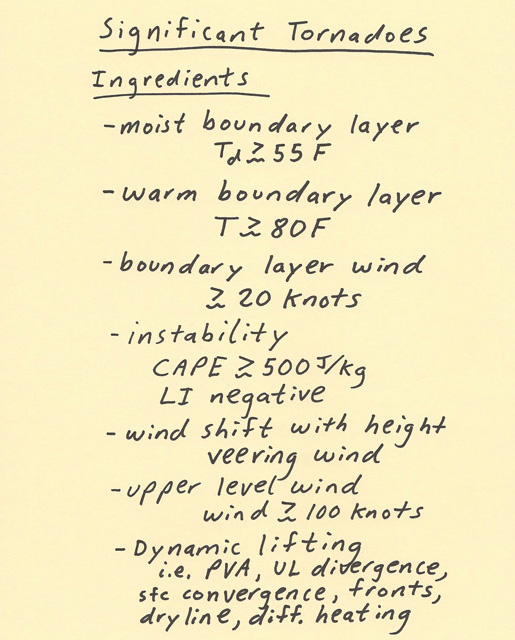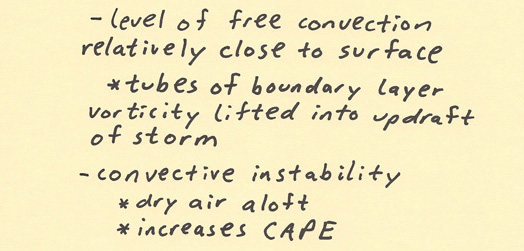
Tornadoes are the most sensational of meteorological phenomena given the attention they are given. They can cause enormous destruction and loss of life, thus it is no wonder they get so much attention. Many of the same atmospheric conditions that lead to strong convective wind gusts and hail can also lead to tornadoes. A tornado can be one of the products produced by a convective thunderstorm. The vast majority of convective storms do not produce a tornado but there are special storms that do and even more special storms that produce significant tornadoes. The significant tornadoes are the largest, most destructive and most dangerous of the tornadoes. This writing focuses on the many factors that typically need to be in place for a significant tornado event to occur. These ingredients are general guidelines and do not guarantee tornado activity since the atmospheric conditions can change rapidly or other factors may be in place (such as a cap) that prevents convective storms. The threshold values on diagram are general guidelines and not a hard fast rule of thumb. Below are the general conditions that are generally in place during a significant tornado event and after the list is an explanation of why each is important.   1. Moist boundary layer: helps the Level of Free Convection to be closer to the surface, helps increase instability, helps fuel convective parcels that release huge amounts of condensational latent heat 2. Warm boundary layer: helps increase instability, helps with process of convective lifting from the surface, fuels parcels of rising air 3. Moderate to strong boundary layer wind: helps ingest heat and moisture into the updraft of a storm, helps increase low level Helicity, helps increase surface convergence 4. Instability: helps increase updraft speed, helps stretch rising parcels of air 5. Wind shift with height: helps twist rising updraft 6. Moderate to strong upper level wind: helps prolong storm life, helps stretch updraft, helps keep downdraft from overtaking updraft 7. Dynamic lifting: helps initiate convective storms, helps overcome capping inversion 8. Level of Free Convection close to surface: helps convective updraft occur in the same place winds shift with height, helps tornadic circulation to be closer to the ground 9. Convective instability: helps increase instability |